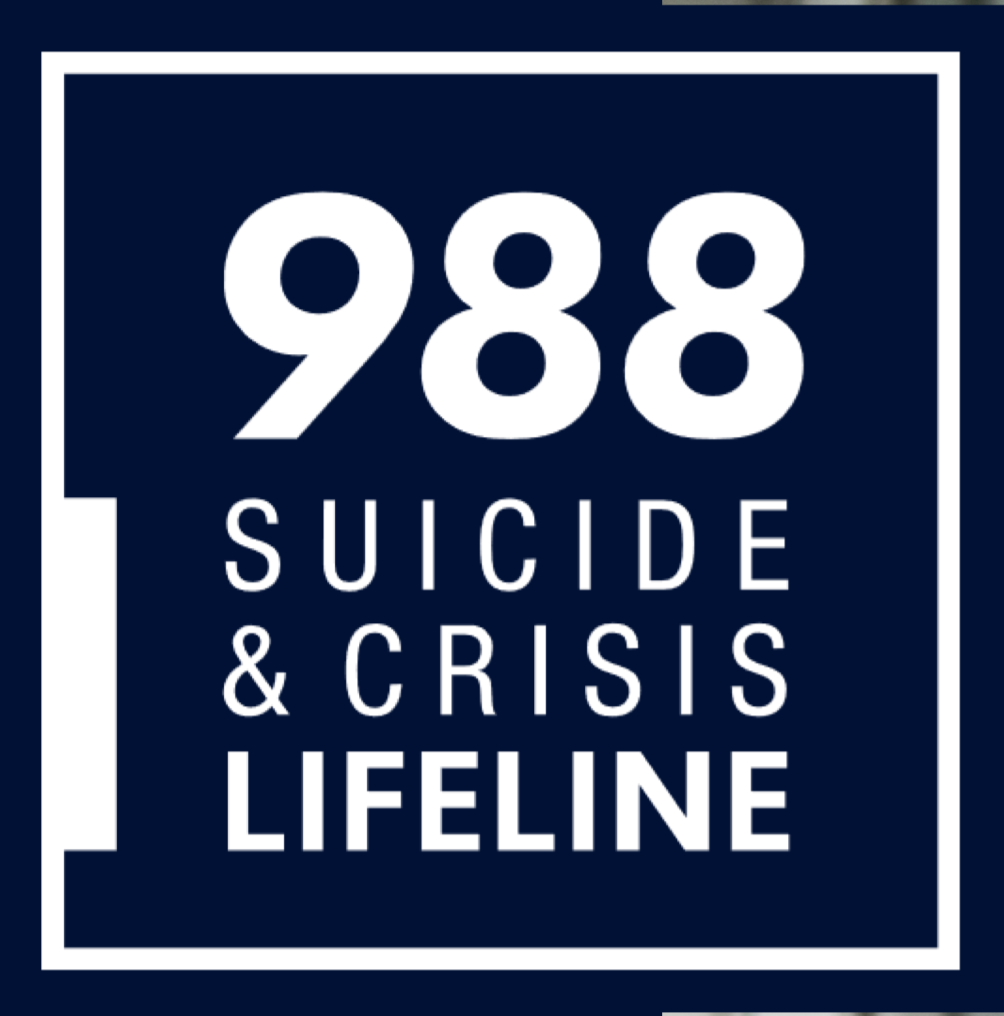Warning Signs
There is no “typical” demographic of person who is at risk for suicide. No age group, ethnicity, or background is immune. Fortunately, many troubled individuals display behaviors deliberately or inadvertently signal their suicidal intent. Recognizing the warning signs and learning what to do next may help save a life.
The Warning Signs
The following behavioral patterns may indicate possible risk for suicide and should be watched closely. If they appear numerous or severe, seek professional help at once. Call or text
988 to reach the
988 Suicide and Crisis Lifeline, which provides access to trained telephone counselors 24 hours a day, 7 days a week.
- Talking about suicide, death, and/or no reason to live
- Preoccupation with death and dying
- Withdrawal from friends and/or social activities
- Experience of a recent severe loss (especially a relationship) or the threat of a significant loss
- Experience or fear of a situation of humiliation of failure
- Drastic changes in behavior
- Loss of interest in hobbies, work, school, etc.
- Preparation for death by making out a will (unexpectedly) and final arrangements
- Giving away prized possessions
- Previous history of suicide attempts, as well as violence and/or hostility
- Unnecessary risks; reckless and/or impulsive behavior
- Loss of interest in personal appearance
- Increased use of alcohol and/or drugs
- General hopelessness
- Recent experience humiliation or failure
- Unwillingness to connect with potential helpers
What Do You Do?
- Be aware. Learn the warning signs.
- Get involved. Become available. Show interest and support.
- Ask if s/he is thinking about suicide.
- Be direct. Talk openly and freely about suicide.
- Be willing to listen. Allow for expressions of feelings and accept those feelings.
- Be non-judgmental. Don’t debate whether suicide is right or wrong, or feelings are good or bad. Don’t lecture the value of life.
- Don’t dare him/her to do it.
- Don’t give advice by making decisions for someone else to tell them to behave differently.
- Don’t ask “why.” This encourages defensiveness.
- Offer empathy, not sympathy.
- Don’t act shocked. This creates distance.
- Don’t be sworn to secrecy. Seek support.
- Offer hope that alternatives are available, do not offer glib reassurance; it only proves you don’t understand.
- Take action. Remove means. Get help from individuals or agencies specializing in crisis intervention and suicide prevention. Click here to find crisis resources.
Feelings, Thoughts, and Behaviors
Nearly everyone at some time in his or her life thinks about suicide. Most everyone decides to live because they come to realize that the crisis is temporary, but death in not. On the other hand, people in the midst of a crisis often perceive their dilemma as inescapable and feel an utter loss of control. Frequently, they:
- Can’t stop the pain
- Can’t think clearly
- Can’t make decisions
- Can’t see any way out
- Can’t sleep eat or work
- Can’t get out of the depression
- Can’t make the sadness go away
- Can’t see the possibility of change
- Can’t see themselves as worthwhile
- Can’t get someone’s attention
- Can’t seem to get control
Who Can You Talk To?
- A community mental health agency
- A private therapist
- A school counselor or psychologist
- A family physician
- A suicide prevention/crisis intervention center
- A religious/spiritual leader
NOTE: A printable PDF of the information on this page is available here.
Risk Factors
The following are risk factors associated (by empiral study) with an increased occurance of suicidal behavior. However this list is not considered to be prioritized nor exhaustive.
Individual
- Mental disorders:
- Depression
- Schizophrenia
- Anxiety disorders
- Borderline Personality Disorder
- ”States of Mind:”
- Hopelessness
- Impulsivity
- Low self-esteem
- Psychic pain
- Behaviors:
- Social withdrawal
- Alcohol or drug abuse
- Aggressive tendencies or history of violent behavior
- Previous suicide attempt
- Gender:
- Male (for suicide deaths)
- Female (for suicide attempts)
- Older age
- Race
- White
- Native American
- History:
- Previous psychiatric treatment
- History of trauma or abuse
- Suicide ideation
- Physical
- Low CSF 5-HIAA
- Low cholesterol blood levels
- Low blood glucose
- Access to means (e.g., firearms, poisons)
Peer/Family
- History of interpersonal violence, conflict, abuse, bullying
- Family history of alcoholism
- Social isolation: low or lack of social support and sense of isolation
- Exposure to suicidal behavior: family history of suicide
- Exposure to suicide
- Stigma associated with help-seeking behavior
- Barriers to accessing health care, especially mental health services and substance abuse treatment
- No-longer married
- Loss of close attachment relationship (e.g., divorce, death of spouse)
- Access to means (e.g., firearms, poisons)
Community
- Access to lethal means: (e.g., bridges)
- Unemployment or financial loss
- Relational or social loss/humiliation
- Local clusters of suicide that have a contagious influence
- Barriers to health care and mental health care
- Stigma
- Exposure to suicide (e.g., media or memorials)
Society
- Certain Cultural and religious beliefs (e.g., suicide is a noble resolution of a personal dilemma)
- Societal breakdown
- Western geography
- Rural/Remote
- Cultural values and attitudes Media influence
- Alcohol misuse and abuse
- Economic instability
Protective Factors
The following are protective factors associated (by empiral study) with a decreased occurrence of suicidal behavior. However this list is not considered to be prioritized nor exhaustive.
Individual
- Cultural and religious beliefs thatdiscourage suicide and support self preservation
- Support through ongoing health and mental health care relationships
- Coping/problem solving skills
- Resiliency, self esteem, direction, mission, determination, perseverance, optimism, empathy
- Intellectual competence (youth)
- Reasons for living

Peer/Family
- Family cohesion (youth)
- Sense of social support
- Interconnectedness
- Married/Parent
- Access to comprehensive health care
Community
- Access to healthcare and mental health care
- Social support, close relationships, caring adults, participation and bond with school
- Respect for help-seeking behavior
- Skills to recognize and respond to signs of risk
Society
- Urban/Suburban
- Access to health care & mental health care
- Cultural values affirming life
- Media influence
988 Suicide & Crisis Lifeline
The Lifeline is a free 24/7, confidential, short-term crisis counseling line for those experiencing distress. It is a myth that 988 is only for suicidal individuals; it is available to everyone. Call, text, or chat 988 if you are overwhelmed, stressed, and need to talk with a trained counselor.

This project is funded under a grant contract with the State of Tennessee, Department of Mental Health and Substance Abuse Services.

